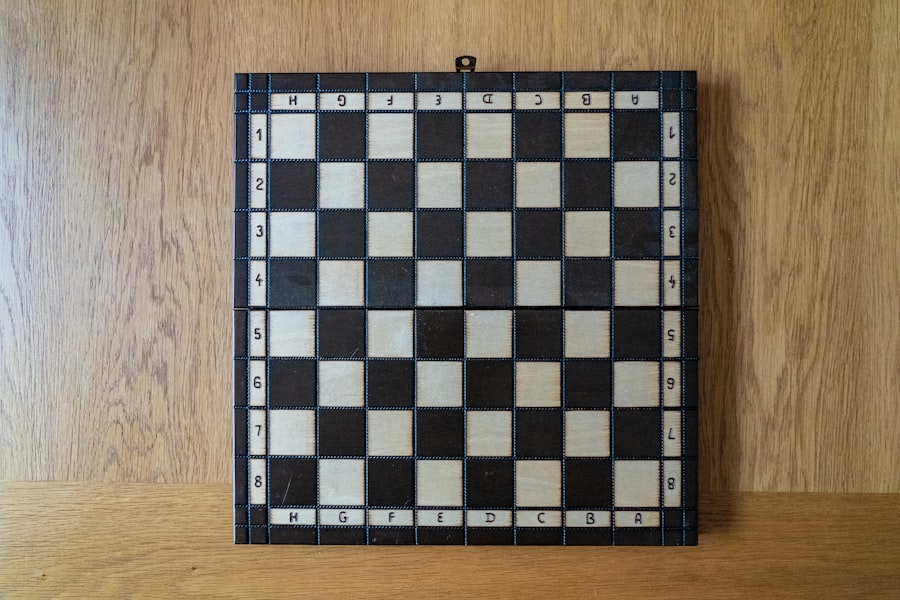Mastering Chess Online: Tips and Strategies
Description
Selecting the appropriate platform for online chess is a crucial first step for both beginners and seasoned players. The landscape of online chess is rich with options, each offering unique features that cater to different playing styles and preferences. Websites like Chess.com and Lichess.org are among the most popular, providing a plethora of resources, including puzzles, lessons, and the ability to play against opponents from around the globe.
Chess.com, for instance, boasts a user-friendly interface and a robust community, making it an excellent choice for those who appreciate social interaction alongside their games. The platform also offers various membership tiers, allowing players to access premium content such as advanced tutorials and in-depth analysis tools.
org stands out for its completely free model, which appeals to players who may be hesitant to invest financially in their chess journey.
It features a clean design and a strong emphasis on open-source principles, making it a favorite among purists. Additionally, Lichess provides a wide array of tools for analysis and training, including an extensive database of games and a powerful analysis engine. When choosing a platform, players should consider factors such as user interface, community engagement, available resources, and personal goals.
Whether one seeks casual play or serious competition, the right platform can significantly enhance the overall chess experience.
Key Takeaways
- Choose a platform that suits your skill level and offers a user-friendly interface
- Learn the basic rules and strategies of online chess before diving into competitive play
- Develop a strong opening repertoire to gain an early advantage in your games
- Focus on improving tactical and strategic skills through practice and analysis
- Utilize online resources and tools such as tutorials, puzzles, and databases to enhance your game
Understanding the Basics of Online Chess
Understanding the Basics of Chess
The game of chess is played on an 8×8 board with 16 pieces per player: one king, one queen, two rooks, two knights, two bishops, and eight pawns. Each piece has its own unique movement patterns; for example, rooks move in straight lines along rows or columns, while bishops traverse diagonally.
Movement and Basic Concepts
Understanding these movements is foundational to developing any strategic approach to the game. In addition to knowing how each piece moves, players must familiarize themselves with basic concepts such as check, checkmate, and stalemate. Check occurs when a king is under direct threat of capture, while checkmate signifies that the king has no legal moves left to escape capture.
Special Moves and Advanced Strategies
Stalemate is a situation where a player has no legal moves but is not in check, resulting in a draw. Grasping these concepts not only enhances gameplay but also lays the groundwork for more advanced strategies. Players should also be aware of special moves like castling and en passant, which can significantly influence the dynamics of a game.
Mastery of the Basics for Online Chess Success
Mastery of these basics is essential for anyone looking to progress in online chess.
Developing a Strong Opening Repertoire

A well-structured opening repertoire is vital for setting the tone of a chess game. The opening phase is where players establish control over the center of the board, develop their pieces efficiently, and prepare for the middlegame. There are numerous established openings that players can adopt based on their style and preferences.
For instance, the Ruy Lopez is a classic opening that emphasizes piece development and control of the center, while the Sicilian Defense offers counterplay opportunities for Black against 1.e4. When developing an opening repertoire, it is beneficial to focus on a few key openings rather than trying to memorize every possible variation. This allows players to gain deeper insights into specific lines and understand the underlying principles rather than rote memorization.
For example, if a player chooses to adopt the French Defense as Black against 1.e4, they should study its main lines and typical pawn structures to better navigate the middlegame positions that arise from it. Additionally, players should be prepared to adapt their repertoire based on their opponents’ responses and be willing to explore new openings as they gain experience.
Improving Tactical and Strategic Skills
| Metrics | Current | Target |
|---|---|---|
| Success Rate | 75% | 85% |
| Decision-making Speed | 30 seconds | 20 seconds |
| Strategic Thinking Score | 80 | 90 |
Tactics and strategy are two pillars of chess that work in tandem to create winning positions. Tactical skills involve recognizing patterns and calculating sequences of moves that can lead to immediate advantages such as winning material or delivering checkmate. Common tactical motifs include forks, pins, skewers, and discovered attacks.
Players can sharpen their tactical abilities by solving puzzles regularly; many online platforms offer daily puzzles that cater to various skill levels. Strategic skills, on the other hand, focus on long-term planning and positional understanding. This includes concepts such as pawn structure, piece activity, and control of key squares.
A player might recognize that doubling rooks on an open file can exert pressure on an opponent’s position or that creating weaknesses in an opponent’s pawn structure can lead to long-term advantages. To improve strategic skills, players should analyze their games critically and study classic games played by grandmasters. Understanding how top players approach strategic decisions can provide invaluable insights into effective planning during one’s own games.
Utilizing Online Resources and Tools
The internet has revolutionized how chess players learn and improve their skills. Numerous online resources are available that cater to various aspects of chess education. Websites like Chess.com and Lichess.org not only provide platforms for playing but also offer extensive libraries of instructional videos, articles, and interactive lessons tailored to different skill levels.
These resources can help players understand complex concepts at their own pace. In addition to instructional content, players can benefit from using chess engines like Stockfish or Leela Chess Zero for game analysis. These powerful tools can evaluate positions with remarkable accuracy and suggest optimal moves based on extensive calculations.
By analyzing their games with these engines, players can identify mistakes or missed opportunities that may have gone unnoticed during play. Furthermore, engaging with online forums or communities can provide additional support; discussing games with fellow enthusiasts can lead to new insights and foster a sense of camaraderie among players.
Playing and Analyzing Games

Regularly playing games is essential for improvement in chess; however, simply playing without reflection can limit growth. After each game—whether won or lost—players should take time to analyze their performance critically. This involves reviewing key moments in the game where critical decisions were made or where mistakes occurred.
In addition to self-analysis, seeking feedback from stronger players can provide valuable perspectives on one’s gameplay. Participating in online tournaments or joining clubs can facilitate opportunities for such interactions.
By discussing games with peers or mentors, players can gain insights into alternative strategies or approaches they may not have considered. This collaborative learning environment fosters growth and encourages players to think critically about their decisions during play.
Managing Time and Avoiding Distractions
Time management is a crucial aspect of online chess that often goes overlooked by players focused solely on strategy and tactics. Many online platforms offer various time controls ranging from blitz (a few minutes per player) to classical (upwards of an hour per player). Understanding how to manage time effectively during a game can significantly impact performance; rushing decisions in time trouble often leads to mistakes.
To enhance time management skills, players should practice playing under different time controls to develop adaptability. Additionally, creating a distraction-free environment while playing can help maintain focus during games. This might involve turning off notifications on devices or finding a quiet space conducive to concentration.
Developing routines before games—such as taking deep breaths or visualizing potential openings—can also help players enter a focused mindset.
Staying Mentally and Emotionally Sharp
Chess is not only a test of intellectual prowess but also a mental endurance challenge that requires emotional resilience. Players often face setbacks in the form of losses or frustrating positions; how one responds to these challenges can significantly influence future performance. Cultivating a positive mindset is essential for maintaining motivation and enthusiasm for improvement.
Practicing mindfulness techniques can help players stay calm under pressure during games. Techniques such as deep breathing exercises or visualization can enhance focus and reduce anxiety before critical moments in play. Additionally, setting realistic goals—such as improving specific aspects of gameplay or achieving certain ratings—can provide direction and purpose in one’s chess journey.
Engaging in regular physical activity outside of chess can also contribute positively to mental sharpness; studies have shown that physical exercise enhances cognitive function and emotional well-being. By integrating these practices into their routine, players can develop not only their chess skills but also their overall mental fortitude, enabling them to face challenges with confidence and resilience in both chess and life.
If you are interested in learning more about the game of chess online, you may want to check out the article titled “8k8 Chess: Permainan Catur di Kartu” available at this link. This article discusses the unique and engaging aspects of playing chess with cards, providing a fresh perspective on this classic game. Whether you are a seasoned chess player or just starting out, this article offers valuable insights into the world of online chess.
FAQs
What is online chess?
Online chess refers to the practice of playing chess over the internet using a computer, smartphone, or other electronic device. Players can compete against each other in real-time or take part in turn-based games.
How does online chess work?
Online chess platforms provide a virtual space for players to connect and play games. Players can create accounts, search for opponents, and join games with people from around the world. Moves are made by clicking and dragging the pieces on the virtual board.
What are the benefits of playing chess online?
Playing chess online allows players to practice and improve their skills at any time, connect with a global community of chess enthusiasts, and access a wide range of opponents with varying skill levels. It also provides the convenience of playing from anywhere with an internet connection.
Are there different types of online chess platforms?
Yes, there are various online chess platforms, each with its own features and user interface. Some platforms offer casual play, while others host tournaments and provide training resources. Examples of popular online chess platforms include Chess.com, Lichess, and Chess24.
Is online chess safe and secure?
Most reputable online chess platforms take measures to ensure the safety and security of their users. This includes encryption of personal data, monitoring for cheating or inappropriate behavior, and providing tools for reporting and blocking other users. However, it’s important for players to use caution and follow best practices for online safety.





